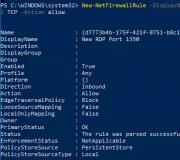How to manage plug-ins in Yandex browser. How to perfectly and quickly customize your browser for yourself Operating mode in text fields
After switching to Chrome from Opera, I missed one thing: using the browser without a mouse - moving around the page, following links, etc. Often, when I carry a laptop, I need to work without a mouse. Alas, the touchpad on my x350 is far from “Apple”, so it became very inconvenient. In Opera, this feature was available without plugins by specifying hotkeys in the system menu. I used the Hotkeys plugin as an unequal replacement.
It allowed you to move around the page, tabs, history, but you couldn’t “follow” links or headings.
And suddenly happiness came - the Key Binder plugin was found, which introduces a multi-mode Vim-like approach to working with the browser into the browser. In fact, it turned out to be a very convenient, multifunctional, customizable add-on.
After installation, the plugin offers us to take a short training course in English, as a result of which we learn that working with the keyboard is carried out in 3 modes, which are displayed in the panel:
B: navigation mode and form management
I: operating mode in text fields
H: text selection and copy mode
Navigation mode and form management
This mode is enabled by default or enabled from others by pressing Escape
Moving
We can move around the page in the standard vim way: j-down 10px, h-up, k-left, l-right. You can go all the way in all four directions.
To follow links, click on buttons and various form elements, there is a universal key “a” - which displays unique two-letter combinations near all active elements visible on the screen, typing which performs the action. At the same time, the combinations are convenient when using the ten-finger typing method: ff, fj, fk, dk - that is, we press “a” with our little finger and then finish the command with our index or middle fingers.
I liked this innovative approach more than in Opera, when we used two keys to navigate through all the links in a row.
For drop-down lists, all items with the same two letters are displayed at the top
For lists where you can select multiple items, we use a space. 
There is another interesting feature: The "A" Command, which allows you to follow links as text (without the A tag)
Address line
When you click on “o” your own address line opens. Search works in real time. Moving between items is done using Tab. However, there is not enough additional search within the site using Tab.
Search
The author implemented his search by pressing the keys "/", "?" (Forward and back). It may or may not be case sensitive: It depends on whether we use it in the string. When you hold down ctrl, we can search using regular expressions. By clicking on Enter, we go to the first result found. To go to next/previous we use “n”/“N” respectively.
Operating mode in text fields
You can switch to this mode either using the already familiar “a” key or the g+i combination. We can move between adjacent text fields by double pressing the keyboard shortcuts ctrl-x + ctrl+; and ctrl-x + ctrl -p
The most interesting thing begins elsewhere - you can work with text without arrows on the keyboard: move, copy/delete lines/words/letters using various key combinations.
According to the documentation, there is a search mode, but for some reason it didn’t work for me...
Text selection and copy mode
After clicking on “s”, as in “a” mode, we are presented with keyboard shortcuts for all paragraphs and significant elements for quick transition. Next, by pressing “v” we fix the first point to select the text and by moving it with the navigation keys (hjkl) we select the desired piece. In the end we have 3 options:
"v" - reset selections for a new attempt
“y” - copy text to clipboard
"o" - insert text into its own address bar
To exit we press Escape
Editing settings
In the settings, in addition to viewing all the standard keys, the developer provided the ability to edit all the keys in a kind of console.
The format itself is simple:
bind/ubind<режимы> <клавиша> <назначаемая команда>
The keys themselves are indicated in the format<[клавиша модифактор-] клавиша>.
You can use keyboard shortcuts.
The format used for ctrl is
For example:
bind b j says that when we press the j key in move mode, we move the window by 50px (when the default is only 10).
bind i
You can also set individual settings and hotkeys for pages by URL.
Optimizing settings
The standard keys didn’t seem very convenient to me, so I tweaked them a little and am offering my customization to the community. Main changes:
- Moved the navigation keys to the right to “jkl;”. Despite my love for the movement keys in vim, in the browser it seems inconvenient to me, since when using the “a” command you need to constantly move your hand to the standard position
- Placed next to it above moving through tabs and history
- In text editing I set the usual keys ctrl+c,ctrl+x,ctrl+v,(copy,cut,paste) ctrl+z,ctrl+y,ctrl+Z (undo, redo)
Using the plugin
After a week of testing, the following operating features were identified:- The keys in Gmail and Reader do not work and, the saddest thing, you cannot temporarily disable the plugin.
- Gmail doesn't work: I can't open emails - they aren't linked, so the plugin doesn't see them
In editing mode ctrl-c - works like ctrl-x + ctrl-v
The entire test is not highlighted in edit mode - ctrl-a - I couldn’t find it in the settings
When you press F6 (go to the address line), you can’t return to command mode
This plugin turned out to be an extremely pleasant surprise for me (just like vim back in the day). It turned out to be convenient to work with when you don’t have a mouse at hand, and sometimes it’s more convenient when you have one =)
The only thing that is terribly annoying about the plugin is the inability of mail and the inability to temporarily disable it.
P.S.: Another interesting effect was noticed: people around you are surprised when they see you surfing the Internet without a tailed rodent.
Technically, a web browser is a client. A program that uses the HTTP (or HTTPS) protocols to send requests to web servers over the Internet. Most browsers support email and FTP (file transfer), although a web browser is not required to use them. There are separate programs for working with mail and file transfer.
The very first browser, whose name was WorldWideWeb, was created in 1990. The name was changed to Nexus to avoid confusion in perspective. The first web browser with a graphical user interface was Mosaic, which appeared in 1993. Much of Mosaic's user interface has been ported to Netscape's Nsvigator web browser. Later, the corporation introduced Internet Explorer (IE), which until 2006 was one of the most popular web browsers. Back then you had to choose between IE and Netscape. Today the user has more choice. And IE has already ceased to be wildly popular; first of all, users install other web browsers.
The most common browsers
There are quite a lot of web browsers, although most are based on the most common ones. The most popular browsers today are:
- Firefox. Developed by Mozilla, an open source version of Netscape.
- Chrome. Google's browser is one of the most popular today, both for desktop and mobile devices.
- Safari. Browser for devices from . The third most popular, works only with operating systems from Apple.
- Opera. Fast, stable browser compatible with most operating systems.
- Lynx. Text browser for UNIX and VMS users.
- Internet Explorer. Microsoft's browser is still actively updated, supported and optimized, despite impressive competition.
- Flock. Firefox-based browser with Web 2.0 support for blogging and social bookmarking.
- Tor. Browser for completely anonymous access to the network. It is usually used to bypass territorial bans on displaying certain pages and access the darknet.

Modern browsers are constantly updated and provide users with more and more opportunities to visit the World Wide Web. So don't forget to update when a new version comes out. Updates to such client software are completely free.

Basic functions and browser management
All web browsers have the same basic functionality. They are designed to communicate with web servers and provide user access to sites. You can download them from the official websites of the developers; they are completely free. Each browser has its own toolbar, through which you access your favorite sites. Including ours.
The set of tools and buttons in browsers is usually similar. There is an address bar, forward and back buttons, a refresh button, and a stop page loading button. They all have their own menu where you can set custom settings if necessary. You can also view the history of the pages you have visited recently in your browser. Or you can clear it so that no one else has access to this information. Browsers differ in speed, extensions and user interface.
Let's start with the fact that you need to know that absolutely any action can be performed without a mouse. But the most interesting example is using the Internet. Since quite a large portion of users surf web pages from laptops, and they often do not have a mouse, the question is relevant. Even a mouse substitute, a touchpad, is very inconvenient for such work.
How to cope with one keyboard?
First, let's note that the browser itself is important. Secondly, let us add that absolutely any modern browser is suitable for this. Another question is how convenient it will be. Thirdly, how can we improve the existing methods? Because this mechanism works differently in different browsers.
So, standard browsers and methods for browsing the Internet using the keyboard in them.
Mozilla Firefox, Google Chrome, Internet Explorer
These browsers by default support opening any link to pages using only the keyboard (). But according to the local author, the standard method of doing this is quite long and tedious, although in extreme cases it is still a solution. This is done using the Tab and Shift+Tab keys. These commands will iterate through all the active links on the open web page one by one. Tab - down in order, Shift+Tab - up in the same way. Moreover, the link on which the cursor is currently located will be highlighted with a frame and its address will pop up at the bottom of the browser. It looks something like this. The selected link is opened by pressing the Enter key.
Moreover, it is not known how many times we will need to click on Tab on the page we need. 
The process of searching links is quite unpredictable and uncontrollable. This is where the standard options for using the Internet using the keyboard that the above-mentioned browsers can offer us are exhausted. Which, it should be noted, is quite regrettable. Do not despair, there is always a way out, and more than one, as will become clear from the following text. And you can live in these browsers without a mouse. But first, let's look at someone who can provide us with convenience without any additional setup steps or other dances.
Opera
I have always been pleased with this browser for its flexibility. Very powerful functionality, with noticeably lower consumption of computer resources compared to other browsers. Opera has always had the opportunity to customize the browser for yourself down to the smallest detail, so that working with it is as comfortable as possible, and without installing any additional gadgets.
hotkeys
I was especially pleased with the ability to set and change keyboard combinations, the so-called hotkeys or shortcusts. But let's see what you can do in Opera without having a mouse at hand. The most truly convenient browsing of Internet pages using only the keyboard! Hold Shift and try clicking the arrows (Shift+right/left/up/down or briefly shift+arrows). And voila. We observe that in a couple of moments we can jump to any link on the page. At the same time, the current link is highlighted with a clearly visible blue frame, which cannot be said about other browsers. In the same Firefox, you have to work hard to notice the thin dotted frame around the link. In addition, in Firefox it depends on the web page how it will look.

But that's not all that Opera is famous for. Follow the link using Enter, as in other browsers. But there is also Shift+Enter. This combination will open the desired link in a new tab. And there is Ctrl+Shift+Enter - this will open the link in a new background tab, that is, without transferring to it. This is useful when opening several links from one page, such as from a search results page - we look through the results, open the links of interest in the background tabs (usually a click with the mouse wheel when using it, if anyone didn’t know) and then go read the tabs. And It is also impossible not to mention that Opera allows you to change all these combinations at your discretion. (For example, a local author uses Alt+Enter to open links in a background tab). But how to change them - more on that another time. And now, it’s time to tell you how you can help users of Firefox and Chrome to surf from the keyboard.
Perhaps someone has already guessed. You need to install extensions. At the moment I know of one pretty good option for each browser. In my opinion, they are much worse than Opera's solution, but still.
Google Chrome
Install the KeyBoard Navigation extension https://chrome.google.com/webstore/detail/abcekjakjehkpheoaadhkjfcdodpjbgk
Mozilla Firefox
It is implemented in a similar way as in the case of Chrome. Install the Mouseless Browsing extension https://addons.mozilla.org/en-US/firefox/addon/mouseless-browsing/
We restart the browser, and we observe that numbers again appear next to each link on any page. But unlike KeyBoard Navigation Chrome, here you don’t need to press anything every time to see these numbers, they are shown constantly. In order to follow the desired link, you need to hold down the Ctrl key and dial the number of the desired link.
 By the way, the modifier is customizable; after installing and restarting Firefox, the extension will display a window asking which key to use to open links. I chose Ctrl, but there are ALt and ALt+Ctrl options. In addition, the extension has other settings, but I believe the interested reader will figure them out on his own. That’s all. Happy keyboard surfing!
By the way, the modifier is customizable; after installing and restarting Firefox, the extension will display a window asking which key to use to open links. I chose Ctrl, but there are ALt and ALt+Ctrl options. In addition, the extension has other settings, but I believe the interested reader will figure them out on his own. That’s all. Happy keyboard surfing!
Having bought a brand new car, the first thing you will do is adjust the seats, steering wheel, dashboard and other elements that you use when moving. You do this in order to get maximum comfort and pleasure from driving your own car.
This is your space, everything is made to suit you and your requirements. If you don't do this after purchasing a vehicle, you won't be able to enjoy the ride to the fullest. The situation is similar with the Internet browser.
After downloading, you need to customize it for yourself so that your stay on the Internet is comfortable and safe. Andrey Zenkov is with you and today I will tell you how to configure it.

In this article, I will give recommendations on how to best configure your browser. I will consider Yandex Browser, but if you use Chrome or Mozilla, don’t rush to leave. I have prepared detailed video instructions for you on how to use these programs.
Do not think that this is a trivial process that is not worth paying attention to, this is not the case at all. If your work involves being on the global network, then adjusting the functions of your browser to suit you will help.
Setting up Yandex Browser
All modern browsers are similar in structure. I will talk about the settings of the Yandex product, since I use it most often. If you use something else, don’t be upset; most of the settings in modern projects are the same.
Before you begin, take a look at what settings you can configure. To do this, go to the “Settings” section:

I also recommend watching a useful video tutorial on setting up Mozila Firefox:
Configurations are divided into two groups: basic and additional. Personally, it is not entirely clear to me on what principle the Russian company added some parameters to the first group, and others to the second.
Synchronization
The very first parameter is synchronization. This is probably the thing I love most about modern software for surfing the Internet. If you don’t know what it is, then after my story you will immediately begin to actively use it. In order not to go into theoretical jungle, I will explain everything in human language: let’s say you have a smartphone, a PC and Yandex. You log in to it from two devices and can view bookmarks from your PC on your phone, view the history of your last visits, and much more. Synchronization includes the following sections:

I use all the points. If you have it disabled, then in the settings there is a corresponding “Enable synchronization” button. On the page that opens, select the account you want to work with. To do this, you need to log in to your email and then confirm the action.
Appearance
Next comes the appearance settings. Here I can’t say anything specific at all, since designing something is a delicate process in which everyone is guided by their inner feelings. To activate a particular position, you need to left-click on the white square (located next to each inscription) so that a check mark appears. My settings look like this:

Bookmarks bar
If you often use bookmarks to quickly access the resources you need, then the “Show bookmarks bar” settings section will be of interest to you. If it is not activated, to open bookmarks you need to go to the Tableau (start page), then go to the “All bookmarks” section and look for the one you need. As follows:
Compact, cute and comfortable - these are the first things that come to mind when looking at it. Use the bookmarks bar in your work and you can save a lot of time. Advice from me personally: for convenience, combine several bookmarks that have something in common into one folder. This way you will find the sites you need faster.
The following configurations are:

You can’t say much about them because of the telling names, so I’ll tell you briefly. You can configure which search engine you use to search for information, which tabs to open after launching the browser, and which tab to switch to when closing. Specify in which part of the screen to show the currently open pages and their . There are no specific recommendations for these parameters. They are simple; when choosing one option or another, feel free to be guided by your own preferences.
Notifications
We have smoothly arrived at another interesting point - displaying pop-up windows. A convenient thing that will help you not miss the latest news, read new emails, etc. If something happens, an alert appears in the lower right corner about it. The user can choose which resources to show them from. To choose which sites to receive information from, click on the “Notification settings” button:
I think this is a double-edged sword. When you're relaxing and not doing anything, notifications are useful, but they are wildly distracting, which reduces productivity. The Yandex Browser developers have provided a good “Turn off all notifications for 3 hours” button for such situations. With one click you remove pop-ups that distract you from your work. As they say, genius is simple.
If you use Google Chrome, I suggest you watch an interesting and useful video about the settings in it:
Profiles
The next item is user profiles. This option is useful for large families, corporate environments, and any other place where multiple people use the same browser. This feature is similar to Windows Users. That is, several accounts are created within one browser, each of which has its own history, bookmarks, configurations, etc.

For ease of perception, each one can be given a name. To create a new one, you need to click on the “Add profile” button, enter a name and assign a picture. It is not necessary to go into settings every time to switch between accounts. Desktop shortcuts are automatically created for everyone.
At the end of this section, you can see which browser is used by default and specify the Turbo mode settings (used when the Internet speed is slow or the connection is poor).
Advanced settings include many configurations that need to be handled carefully. The degree of your security in the vastness of the global web depends on them. I suggest you watch a good video in which you can get answers to many questions:
So, you have set up your own browser for fruitful work. But often a person’s main opponent on the path to success is himself and his laziness. We must fight this. If you have already tried many methods or just want to start (but don’t want to waste time), then I recommend taking a good course from Andrey Popov “ The secret to being productive at the computer " With it, you will improve your own results several times! So don't put it off for a long time, but look right now.

What conclusion can be drawn from all this? First of all, it is necessary to regulate the operation of the web browser. This will not only improve your safety, but also your productivity. I strongly recommend that you use the knowledge gained in today's article if you want to achieve your goals.
This concludes my time. Today you learned what parameters can be configured in Yandex Browser and similar programs. If you want to read interesting articles every week, then subscribe to my blog right now! A new article will be published very soon, but it’s time for us to say goodbye for today.



